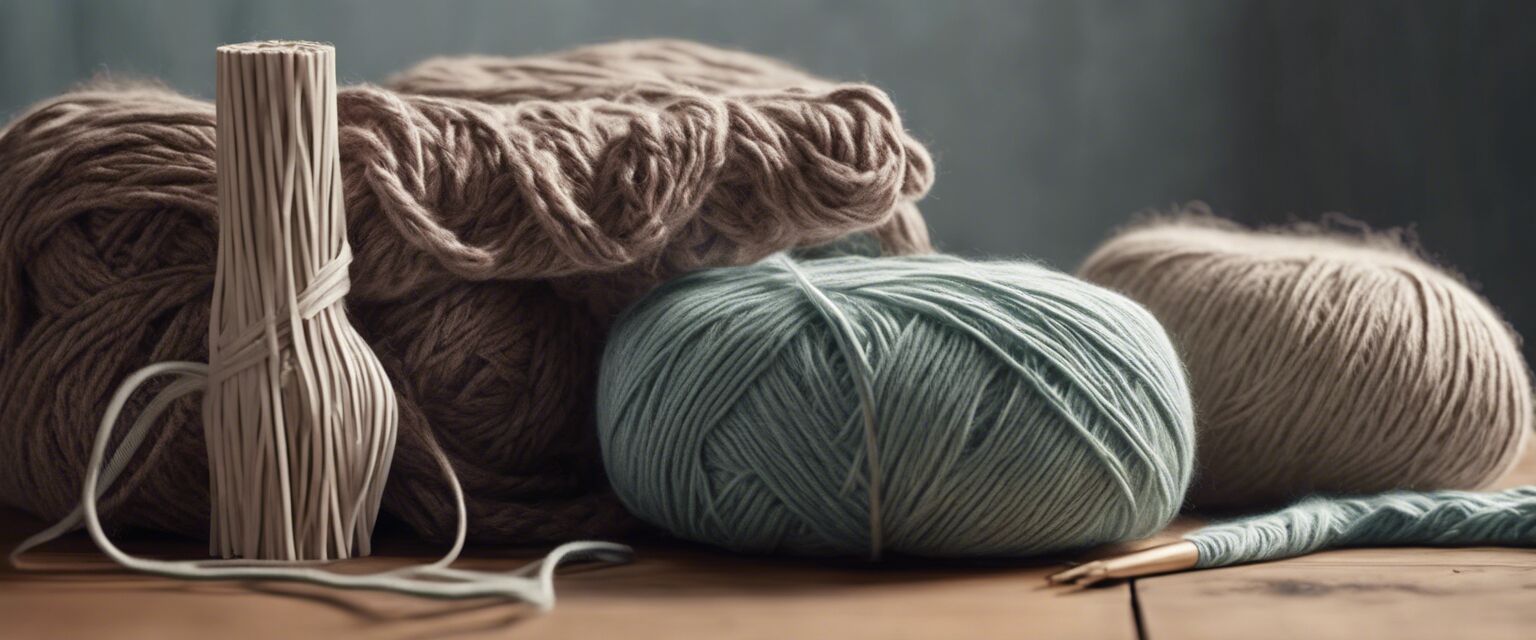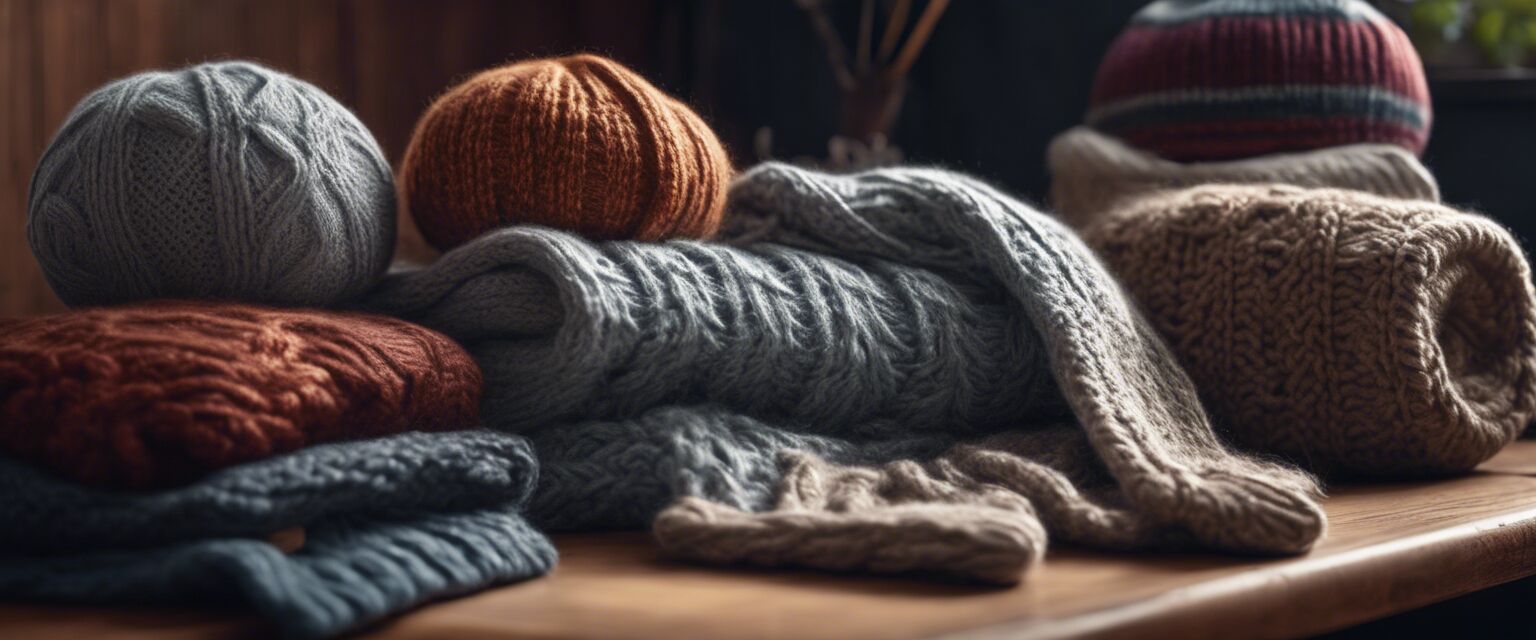
Eco-Friendly Knitting
Key Takeaways
- Eco-friendly knitting materials contribute to a sustainable future.
- Using organic yarns, recycled materials, and natural dyes can reduce your carbon footprint.
- Implementing sustainable practices in your knitting routine can inspire others.
- Explore various eco-friendly knitting accessories and tools.
- Join a community of knitters focused on sustainability.
In a world that increasingly values sustainability, eco-friendly knitting has emerged as a popular practice among crafters. This guide will explore sustainable knitting practices and highlight the importance of using eco-friendly materials. We'll provide valuable insights on how to make your knitting journey not only enjoyable but also beneficial for the planet. Whether you're a beginner or a seasoned knitter, there's something here for everyone!
What is eco-friendly knitting?
Eco-friendly knitting encompasses the use of sustainable materials and practices that minimize environmental impact. This includes selecting yarns made from organic fibers, utilizing recycled materials, and promoting ethical production methods. By choosing eco-friendly options, knitters can significantly reduce waste and support a healthier planet.
Benefits of eco-friendly knitting
- Environmental impact: Using sustainable materials helps reduce pollution and waste.
- Health benefits: Organic yarns are often free from harmful chemicals.
- Supporting local economies: Many eco-friendly brands source materials locally.
- Community engagement: Join like-minded individuals in promoting sustainability.
Eco-friendly materials for knitting
There are several eco-friendly materials that can be used in knitting projects. Below are some popular options:
| Material | Description | Benefits |
|---|---|---|
| Organic Cotton | Grown without pesticides or synthetic fertilizers. | Soft, breathable, and biodegradable. |
| Bamboo Yarn | Made from bamboo pulp, a renewable resource. | Moisture-wicking and naturally antibacterial. |
| Recycled Yarn | Crafted from post-consumer waste, such as plastic bottles. | Reduces landfill waste and energy consumption. |
| Hemp Yarn | Derived from the hemp plant, known for its strength. | Durable, biodegradable, and requires little water to grow. |
| Wool from Ethical Farms | Wool sourced from farms practicing sustainable methods. | Warm, long-lasting, and supports animal welfare. |
Eco-friendly knitting accessories
In addition to sustainable yarns, consider using eco-friendly accessories in your knitting projects. Here are some options:
- Biodegradable knitting needles made from bamboo or wood.
- Project bags made from recycled materials.
- Natural cotton or jute stitch markers.
- Eco-friendly scissors crafted from recycled metal.
Choosing sustainable knitting patterns
When selecting patterns, look for those that emphasize sustainable practices. You might also consider:
- Knitting with scraps and leftovers to reduce waste.
- Choosing patterns that require minimal yarn.
- Repurposing old knitted items into new projects.
Implementing sustainable practices in your knitting routine
Here are some practical tips to make your knitting routine more eco-friendly:
Tips for sustainable knitting
- Use energy-efficient lighting in your crafting space.
- Donate unused yarn and finished projects to local charities.
- Participate in community swaps or exchanges for yarn and patterns.
- Educate others about the benefits of eco-friendly knitting.
Join the eco-friendly knitting community
Becoming part of an eco-friendly knitting community can enhance your experience and inspire others. You can:
- Join online forums and social media groups focused on sustainable crafting.
- Attend local knitting meetups that emphasize eco-friendly practices.
- Participate in workshops that teach sustainable knitting techniques.
Conclusion
Eco-friendly knitting is not just a trend; itâs a lifestyle choice that benefits both the individual and the planet. By using sustainable materials, promoting ethical practices, and engaging with the community, you can make a positive impact through your craft. Start incorporating eco-friendly practices into your knitting routine today and inspire others to follow suit!
Pros
- Promotes environmental sustainability.
- Supports ethical and local businesses.
- Encourages creativity and resourcefulness.
- Enhances community engagement.
Cons
- Eco-friendly materials can sometimes be more expensive.
- Limited availability in some regions.
- Learning curve for new sustainable practices.
Further Resources
For more information on sustainable knitting and eco-friendly materials, check out our other resources:
- Eco-friendly knitting accessories
- Sustainable yarn options
- Beginner eco-friendly knitting kits
- Sustainable knitting patterns
- Organizing your eco-friendly supplies
Images of Eco-Friendly Knitting















